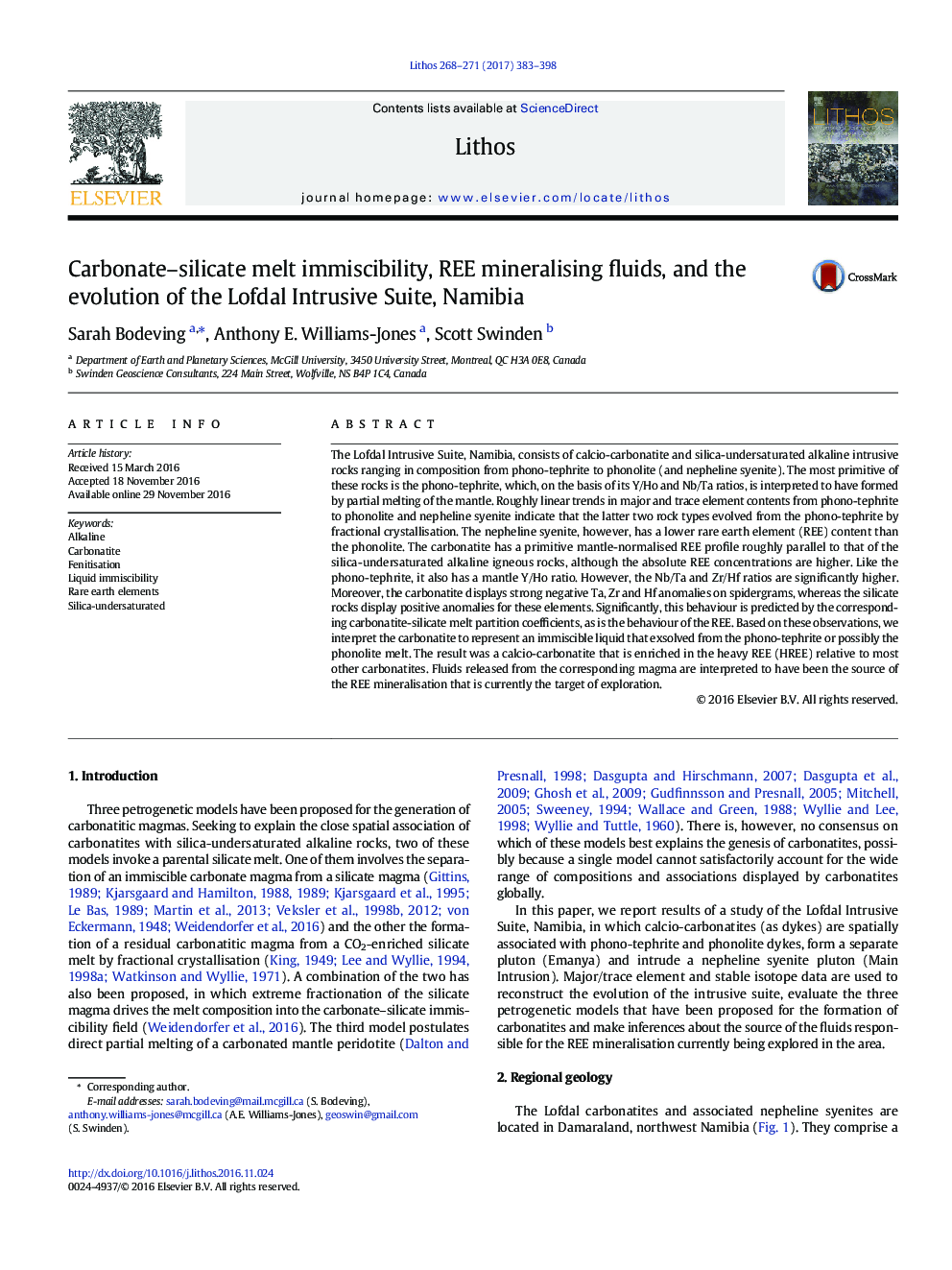| کد مقاله | کد نشریه | سال انتشار | مقاله انگلیسی | نسخه تمام متن |
|---|---|---|---|---|
| 5784353 | 1638637 | 2017 | 16 صفحه PDF | دانلود رایگان |

- Partial melting of mantle produced a phono-tephrite melt that evolved to phonolite and calcio-carbonatite.
- The calcio-carbonatite separated as an immiscible melt from the phono-tephrite or phonolite melt.
- The calcio-carbonatite is anomalously enriched in the HREE relative to other carbonatites.
- Carbonatite-derived carbo-hydrothermal fluids fenitised the adjacent rocks and were the source of the HREE mineralisation.
The Lofdal Intrusive Suite, Namibia, consists of calcio-carbonatite and silica-undersaturated alkaline intrusive rocks ranging in composition from phono-tephrite to phonolite (and nepheline syenite). The most primitive of these rocks is the phono-tephrite, which, on the basis of its Y/Ho and Nb/Ta ratios, is interpreted to have formed by partial melting of the mantle. Roughly linear trends in major and trace element contents from phono-tephrite to phonolite and nepheline syenite indicate that the latter two rock types evolved from the phono-tephrite by fractional crystallisation. The nepheline syenite, however, has a lower rare earth element (REE) content than the phonolite. The carbonatite has a primitive mantle-normalised REE profile roughly parallel to that of the silica-undersaturated alkaline igneous rocks, although the absolute REE concentrations are higher. Like the phono-tephrite, it also has a mantle Y/Ho ratio. However, the Nb/Ta and Zr/Hf ratios are significantly higher. Moreover, the carbonatite displays strong negative Ta, Zr and Hf anomalies on spidergrams, whereas the silicate rocks display positive anomalies for these elements. Significantly, this behaviour is predicted by the corresponding carbonatite-silicate melt partition coefficients, as is the behaviour of the REE. Based on these observations, we interpret the carbonatite to represent an immiscible liquid that exsolved from the phono-tephrite or possibly the phonolite melt. The result was a calcio-carbonatite that is enriched in the heavy REE (HREE) relative to most other carbonatites. Fluids released from the corresponding magma are interpreted to have been the source of the REE mineralisation that is currently the target of exploration.
Journal: Lithos - Volumes 268â271, January 2017, Pages 383-398